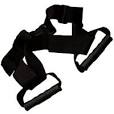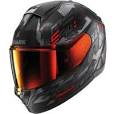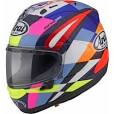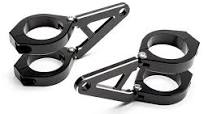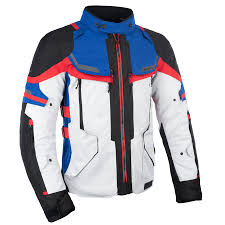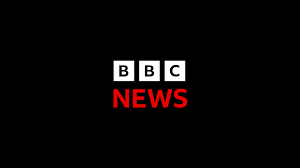Mastering Google SEO: A Guide to Optimising Your Online Presence

The Importance of Google SEO
Search Engine Optimization (SEO) is a crucial aspect of any online presence, and when it comes to search engines, Google reigns supreme. Understanding and implementing effective Google SEO strategies can significantly impact the visibility and ranking of your website in Google search results.
Google’s search algorithm is constantly evolving, aiming to provide users with the most relevant and high-quality search results. By optimising your website for Google SEO, you improve its chances of appearing higher in search engine results pages (SERPs), increasing organic traffic and potential customer engagement.
Key Aspects of Google SEO:
- Keywords: Conducting keyword research to identify relevant terms and phrases that users are searching for is essential. Incorporating these keywords naturally throughout your website content can help Google understand the relevance of your site to specific search queries.
- Quality Content: Creating high-quality, informative, and engaging content is vital for Google SEO. Content that provides value to users is more likely to be shared, linked to, and ranked higher by Google.
- Mobile-Friendliness: With the rise of mobile usage, having a mobile-friendly website is crucial for Google SEO. Websites that are responsive and optimized for mobile devices are favoured by Google’s algorithm.
- Page Speed: Fast-loading websites tend to rank higher in Google search results. Optimising your site’s speed by compressing images, minifying code, and leveraging browser caching can improve user experience and SEO performance.
- Backlinks: Building quality backlinks from reputable websites can boost your site’s authority in the eyes of Google. Natural link-building strategies help demonstrate the credibility and relevance of your content.
The Benefits of Optimising for Google SEO:
Effective Google SEO practices offer numerous benefits for businesses and website owners:
- Increase Visibility: Higher rankings in SERPs lead to increased visibility among potential customers searching for relevant products or services.
- Drive Organic Traffic: Organic traffic generated through improved SEO can result in higher conversion rates compared to paid advertising.
- Build Credibility: Websites that rank well on Google are perceived as more credible and trustworthy by users.
- Growth Opportunities: Improved SEO performance opens up opportunities for business growth, expansion, and increased brand awareness.
In conclusion, prioritising Google SEO as part of your digital marketing strategy can have a significant impact on the success of your online presence. By understanding key SEO principles and implementing best practices tailored to Google’s algorithms, you can enhance your website’s visibility, attract more organic traffic, and ultimately achieve business growth and success.
Top 5 Tips for Enhancing Your Website’s Google SEO
- Create high-quality and relevant content for your website.
- Optimize your website’s meta tags, headings, and images with relevant keywords.
- Improve your website’s loading speed for better user experience.
- Build quality backlinks from reputable websites to increase your site’s authority.
- Regularly monitor and analyse your website’s performance using Google Analytics.
Create high-quality and relevant content for your website.
Creating high-quality and relevant content for your website is a fundamental tip for effective Google SEO. By producing informative, engaging, and valuable content that resonates with your target audience, you not only enhance user experience but also signal to Google the credibility and authority of your site. Well-crafted content that addresses user queries, incorporates relevant keywords naturally, and offers unique insights can improve your website’s visibility in search engine results pages (SERPs) and attract organic traffic. Remember, content is king in the world of SEO, so investing time and effort into creating compelling material can significantly impact your website’s performance and success online.
Optimize your website’s meta tags, headings, and images with relevant keywords.
To improve your website’s visibility and ranking on Google, it is essential to optimise key elements such as meta tags, headings, and images by incorporating relevant keywords. Meta tags provide search engines with information about your site’s content, while headings structure your page and help search engines understand its hierarchy. Additionally, using relevant keywords in image alt text and filenames can enhance the overall SEO performance of your website. By strategically placing keywords in these elements, you can signal to Google the relevance of your content to specific search queries, ultimately increasing the chances of attracting organic traffic and improving your site’s search engine rankings.
Improve your website’s loading speed for better user experience.
Improving your website’s loading speed is a crucial tip for enhancing Google SEO and providing a better user experience. A fast-loading website not only pleases search engines like Google but also keeps visitors engaged and satisfied. Users today expect instant access to information, and a slow-loading site can lead to high bounce rates and decreased conversions. By optimising your website’s speed through techniques such as image compression, code minification, and leveraging browser caching, you can create a seamless browsing experience that encourages users to stay longer on your site, ultimately improving your SEO performance and driving more organic traffic.
Build quality backlinks from reputable websites to increase your site’s authority.
Building quality backlinks from reputable websites is a crucial strategy in Google SEO to enhance your site’s authority and credibility. When reputable websites link back to your content, it signals to Google that your site is trustworthy and relevant, leading to improved rankings in search results. These backlinks act as votes of confidence, demonstrating the value and reliability of your content to both users and search engines. By focusing on acquiring high-quality backlinks from authoritative sources, you can strengthen your site’s SEO performance and establish a solid foundation for long-term success in the competitive online landscape.
Regularly monitor and analyse your website’s performance using Google Analytics.
Regularly monitoring and analysing your website’s performance using Google Analytics is a crucial tip for effective Google SEO. By leveraging the insights provided by Google Analytics, you can gain valuable data on user behaviour, traffic sources, conversion rates, and more. This information allows you to identify areas for improvement, track the impact of SEO strategies, and make informed decisions to enhance your website’s performance in Google search results. Continuous monitoring and analysis through Google Analytics enable you to adapt and refine your SEO efforts, ultimately driving better results and maximising the potential of your online presence.

